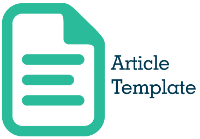Pengembangan Model Pembelajaran Sejarah Wisata Negeri Dongeng Berbasis Taman Miniatur Melalui Pendekatan Outdoor Study di SMA Negeri Ponggok Blitar
Abstract
History learning is one of the lessons that are required to be able to provide wisdom value and character education to students as a form of response to the challenges of the current development of globalization. In this study, the researchers tried to carry out a learning innovation by applying the development of a historical learning model based on the tourism object of the Fairy Tale Miniature Park in Ponggok Village, Blitar Regency. The purpose of this research; (1) Describe the condition of the History Learning in SMA Negeri Ponggok. (2) Developing a model of learning history based on the Fairy Tale Miniature Park with the Outdoor Study approach. (3) To test the effectiveness of the historical learning model based on the Fairy Tale Miniature Park with the Outdoor Study approach. This research is based on the criteria for research and development (R&D) with the ADDIE Model learning design. This research is divided into 3 stages of implementation, namely; the preliminary stage, the model development stage and the final stage of the effectiveness test. This research resulted in the textbook Monograph and HKI as an additional output and mandatory output to be published in a National Accredited Journal, namely Translitera. The results of this study can be seen that there are differences in learning outcomes between the Control class (XI IPS 1) and the Experiment class XI IPS 3) which can be seen from the results of the trials at each stage. Based on the results of the SPSS count statistical test, it can be concluded that the history learning model based on fairy tale tourism can be used to achieve student learning effectiveness.
References
Andri dan I Nyoman Ruja. 2012. tentang “Pengaruh metode outdoor study terhadap kemampuan menulis karya ilmiah Geografi SMA”.Jurnal Pendidikan: Teori, Penelitian dan Pengembangan. Volume: 1 Nomor: 2 Bulan: Februari Tahun: 2016.
Borg and Gall (2003:569 Borg R Walter; Gall Meredith D. 2003. Educational Research; An Intruduction, Fifth Edition; Longman
Djamarah (2002:15-16 Djamarah. 2002. Stategi Belajar Mengajar. Jakarta: Rineka Cipta.
Hamdani. M,A. 2011. Strategi Belajar Mengajar. Bandung: Pustaka Setia.
Husamah. 2013. Pembelajaran luar kelas outdoor learning. Jakarta : Prestasi Pustaka
Joyce, Weil, & Calhoun. 2011. Models of Teaching Model-model Pengajaran. Edisi Kedelapan. Yogyakarta: Pustaka Pelajar.
Lie, A. 2004. Cooperative Learning: Mempraktikkan Cooperative Learning di Ruang-ruang Kelas. Jakarta: Grasindo.
Rochiati, Wiriatmadja. 2002. “Idealitas Pendidikan Sejarah di Indonesia: Perspektif Lokal, Nasional, dan Global”. Universitas Negeri Yogyakarta. Monograf Bandung: Historia Utama Press, 2002 ISBN: 9799697301 14.
Roestiyah, N. K. 2011. Strategi Belajar Mengajar Salah Satu Unsur Pelaksanaan Strategi Belajar Mengajar: Teknik Penyajian. Jakarta: Rineka Cipta
Santrock, J.W. 2007.Psikologi Pendidikan. Jakarta: Kencana.
Sapriya. 2012. Pendidikan IPS;Konsep dan Pembelajaran. Bandung: PT. Remaja Rosdakarya
Schunk, D.H. 2012. Learning Theories on educational perspective.Yogyakarta: pustaka pelajar.
Slameto (2003:13). Belajar dan Faktor-faktor yang Mempengaruhinya. Jakarta: Rineka Cipta.
Slavin, R. (2009). Coperative Learning : Teori, Riset, dan Praktik, Bandung: Nusa Media
Sudjana, N. 2012. Penilaian Hasil Proses Belajar Mengajar. Bandung: PT. Remaja Rosdakarya
Sugiyono. 2014. Metode Penelitian Kuantitatif Kualitatif dan R&D. Bandung: Alfabeta.
Copyright (c) 2021 Translitera : Jurnal Kajian Komunikasi dan Studi Media

This work is licensed under a Creative Commons Attribution-NonCommercial-ShareAlike 4.0 International License.
Authors who publish with this journal agree to the following terms:
- Copyright on any article is retained by the author(s).
- Author grant the journal, right of first publication with the work simultaneously licensed under a Creative Commons Attribution License that allows others to share the work with an acknowledgement of the work’s authorship and initial publication in this journal.
- Authors are able to enter into separate, additional contractual arrangements for the non-exclusive distribution of the journal’s published version of the work (e.g., post it to an institutional repository or publish it in a book), with an acknowledgement of its initial publication in this journal.
- Authors are permitted and encouraged to post their work online (e.g., in institutional repositories or on their website) prior to and during the submission process, as it can lead to productive exchanges, as well as earlier and greater citation of published work.
- The article and any associated published material is distributed under the Creative Commons Attribution-ShareAlike 4.0 International License










